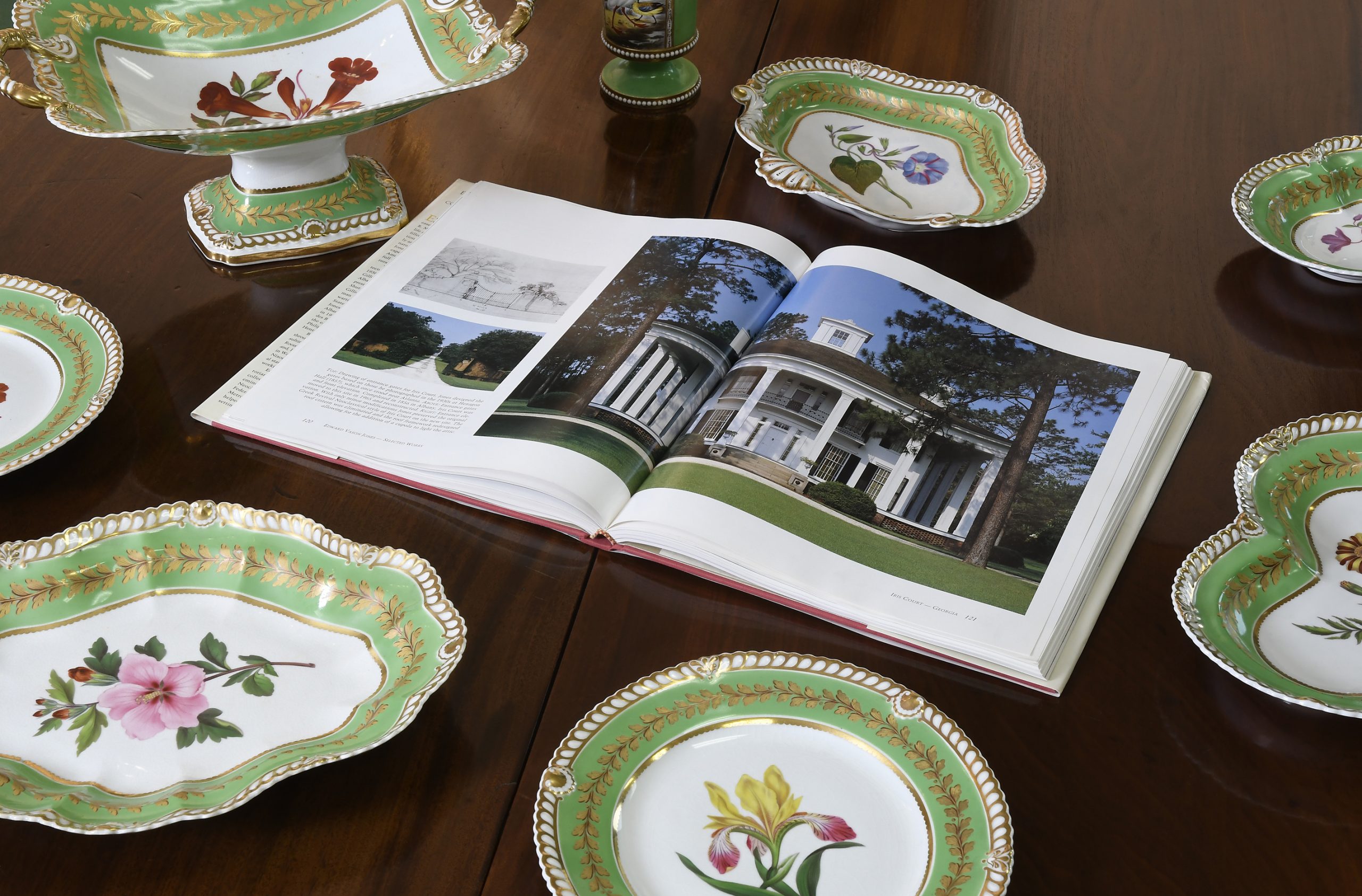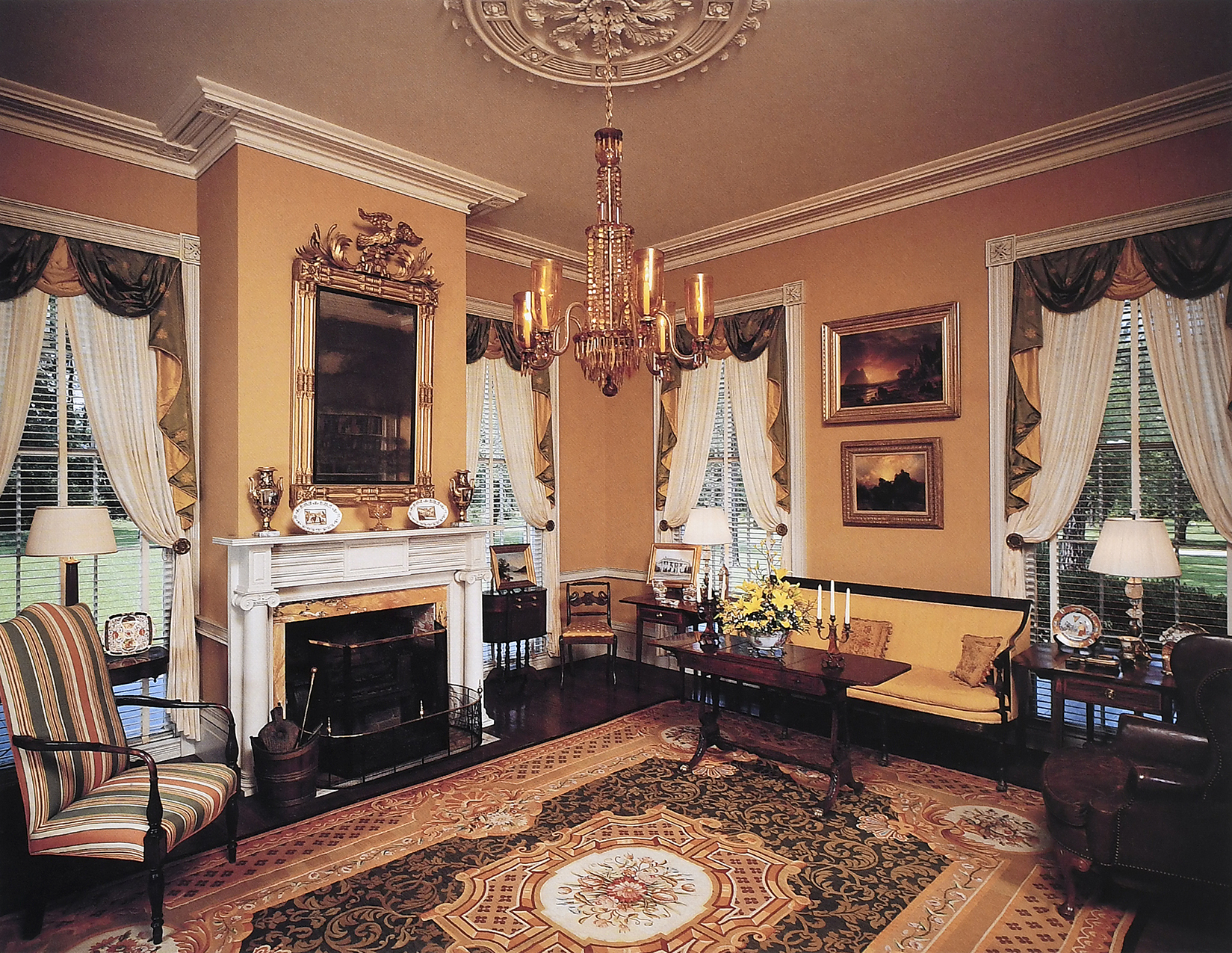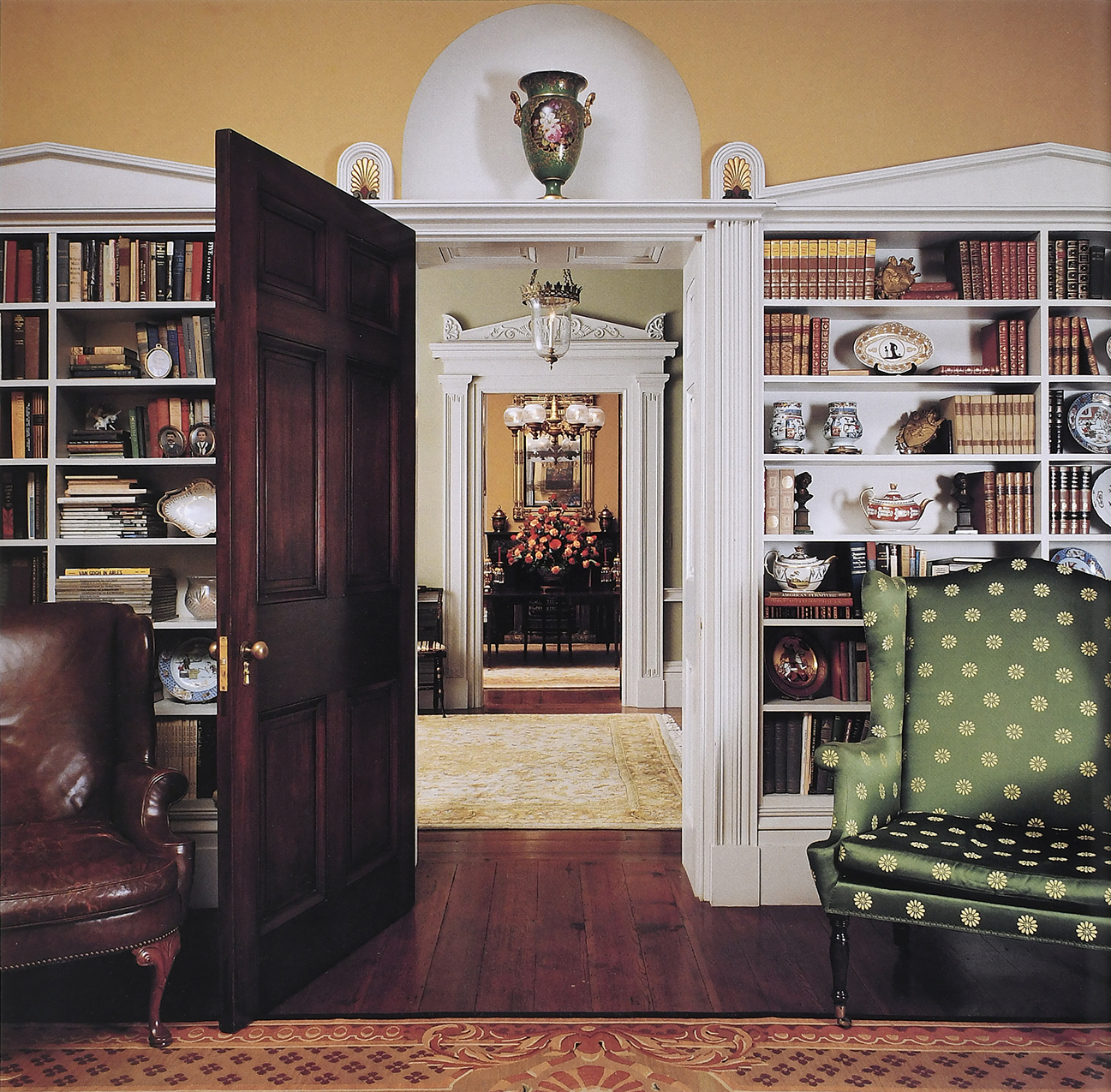The Height of Classical Connoisseurship Iris Court
The name Edward Vason Jones is synonymous with classical connoisseurship, and Iris Court is among his most legendary accomplishments. Every elegant room in the 5,200 square foot Greek Revival home in Moultrie, Georgia, was exquisitely furnished with important American nineteenth century paintings, museum quality New York, Boston, Philadelphia, and Baltimore furniture, and the finest examples of complementary decorative arts. Jones was at the center of the illustrious group of players responsible for the New Federalism that began in the early 1970s, and left a lasting mark on our nation. In the words of White House Curator Clement E. Conger, Edward Vason Jones was a “National Treasure.” His life began in Albany, Georgia, and he ended up “in the White House.”
In many ways, Edward Jones and Iris Court were destined for each other. Growing up surrounded by pillars of Georgia Classicism, he was exposed from a young age to the simplicity, clean lines, balance, and architectural harmony that would come to define his own work, and to influence the 20th century. Iris Court also began life in Albany, and when it was slated for demolition in 1965, Jones contacted his friend and client Charles Smith to save the mansion. Smith did indeed come to the rescue, and Iris Court was carefully dismantled, and reconstructed in Moultrie, Georgia. In many ways the reconstruction brought the building itself into greater glory, by doing away with some unfortunate earlier renovations, adding some modern conveniences for the Smith Family, simplifying layout, and finally adding the appropriate classical detailing throughout. Once finished, Iris Court was ready for furnishing.
The interiors of Iris Court were majestic. It was only fitting that they contain the very best. In photographs, one can see extraordinary masterworks at home in extraordinary surroundings. A glimpse into the dining room would reveal a rare New York eagle topped looking glass over the fireplace, and Severin Roesen’s still life Nature’s Bounty, over a Seymour attributed Federal sideboard. A dinner service could have been laid on the circa 1815 Duncan Phyfe attributed mahogany dining table. The Phyfe and Seymour names could be found in many rooms throughout the house. Important Hudson River School paintings by Jasper Francis Cropsey, Albert Bierstadt, Thomas Moran, and others adorned the walls in every room. Rare breakfronts, work tables, side chairs, games tables, looking glasses, lighting, and carpets complete the picture of classical refinement.
Jones and the Smith’s inner circle of advisors and confidants included such luminaries as Berry Tracy, the pre-eminent museum curator in American 19th century decorative arts, and Clement E. Conger. Mr. Tracy was curator of decorative arts at the Newark Museum from 1960 to 1964 and responsible for the landmark exhibition Classical America, 1815- 1845, the catalogue of which is still considered the standard reference for American furniture styles of the period. The Atlanta-based decorator Virginia White played a large part in the acquisition of the furniture, decorations, and fine art, working with Deen Day Smith and sourcing it from the most important dealers in the world. With all the brightest lights in the mix, the finished, furnished, product was destined to be extraordinary.
Edward Jones met Clement E. Conger at the same time he began work on Iris Court. At the time, Conger was the Chairman of the Fine Arts Committee for the U.S. Department of State, and Curator of the Diplomatic Reception Rooms. He visited the project in Moultrie, met Jones, and the rest is history. Their work together changed taste and style in our nation’s capital and therefore the world. Jones’s designs for the seven major Diplomatic Reception Rooms at the State Department, and expertise on over twenty-five period rooms at the White House inspired Conger to refer to him as a “National Treasure.” The Edward Vason Jones Memorial Hall is what ushers heads of state into the Diplomatic Receptions to this day. It is grand, historic, refined, and inspirational. Brunk Auctions is honored to be offering this unique collection–the furnishings of Jones’s historic masterwork, Iris Court. The style, importance, taste, and timelessness of the accumulated treasures is priceless.
The quotations and photographs used on this page are from Mitchell, William R., and Van Jones Martin. 1995. Edward Vason Jones, 1909-1980 : Architect, Connoisseur, and Collector. [Savannah, GA.], Athens, GA: Martin-St. Martin Pub. Co. ; Distributed by the University of Georgia Press.
World-Class Consignments and Exceptional Results


